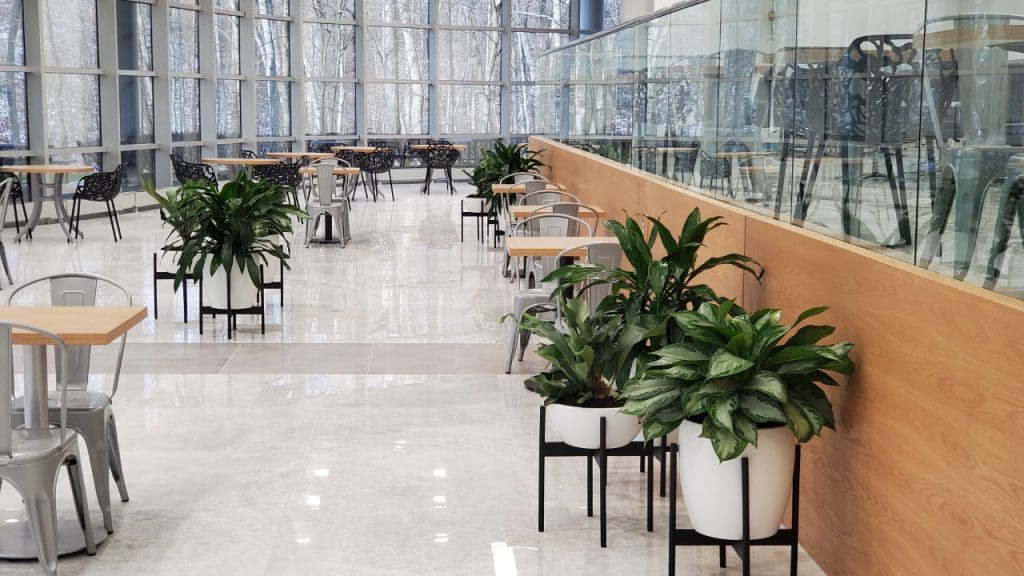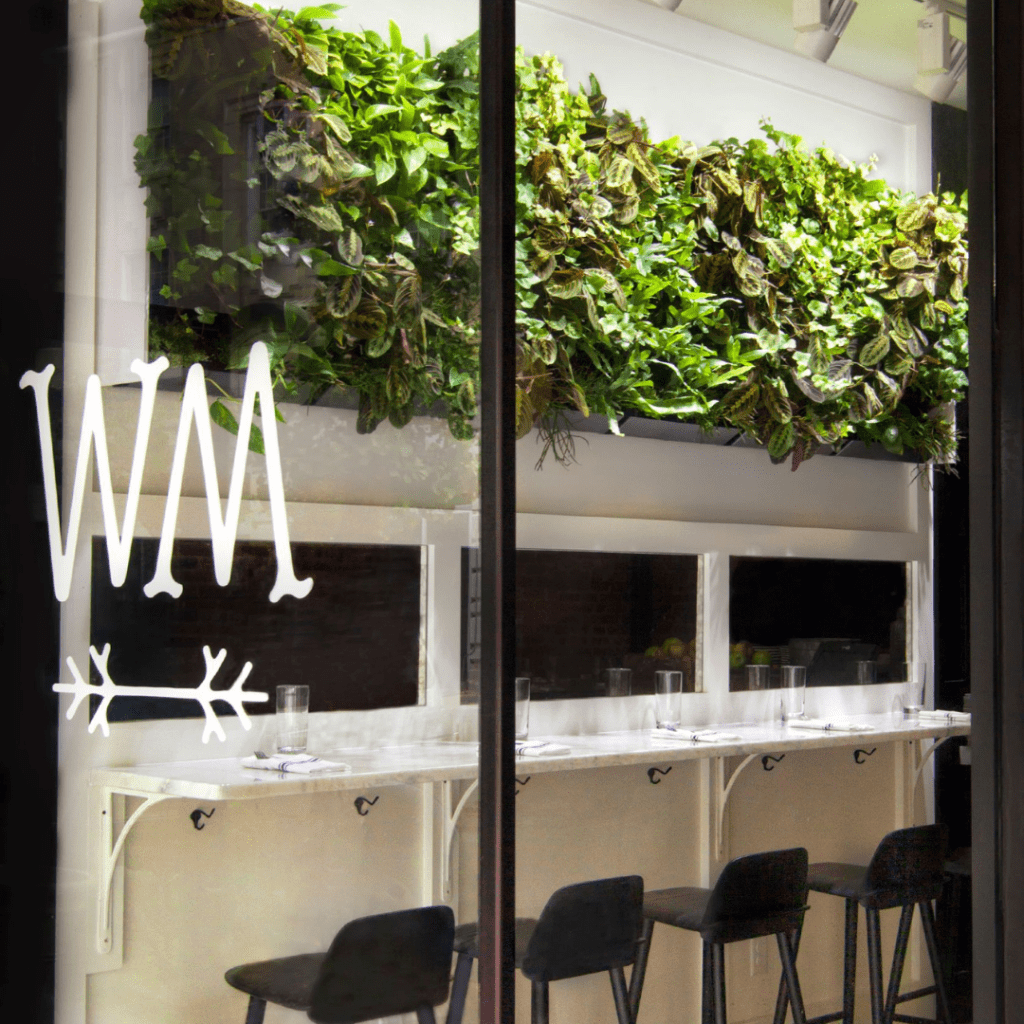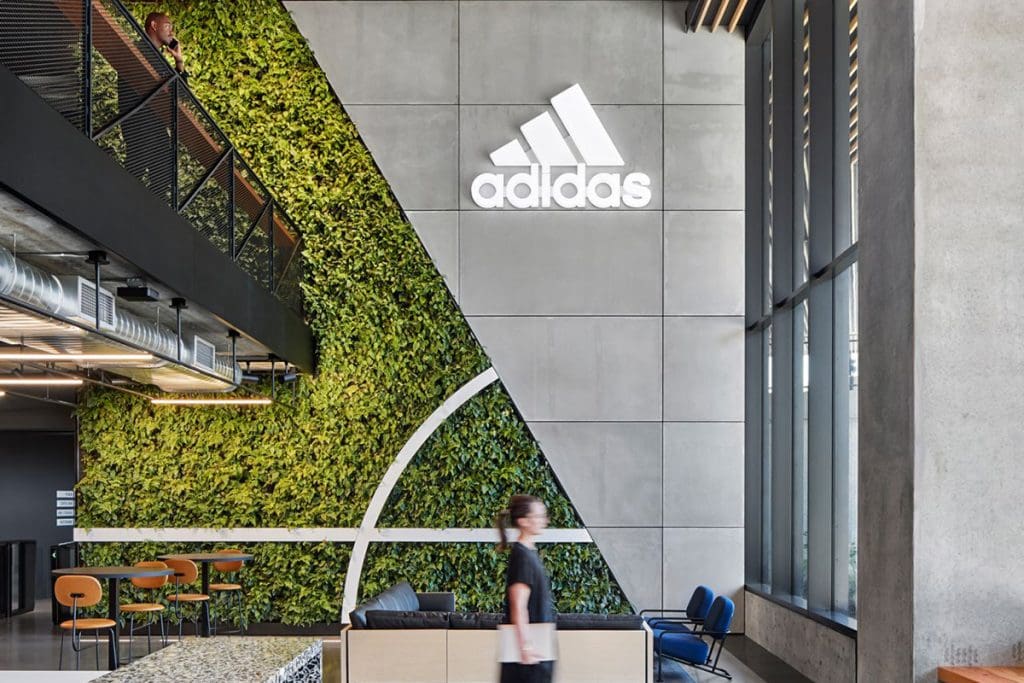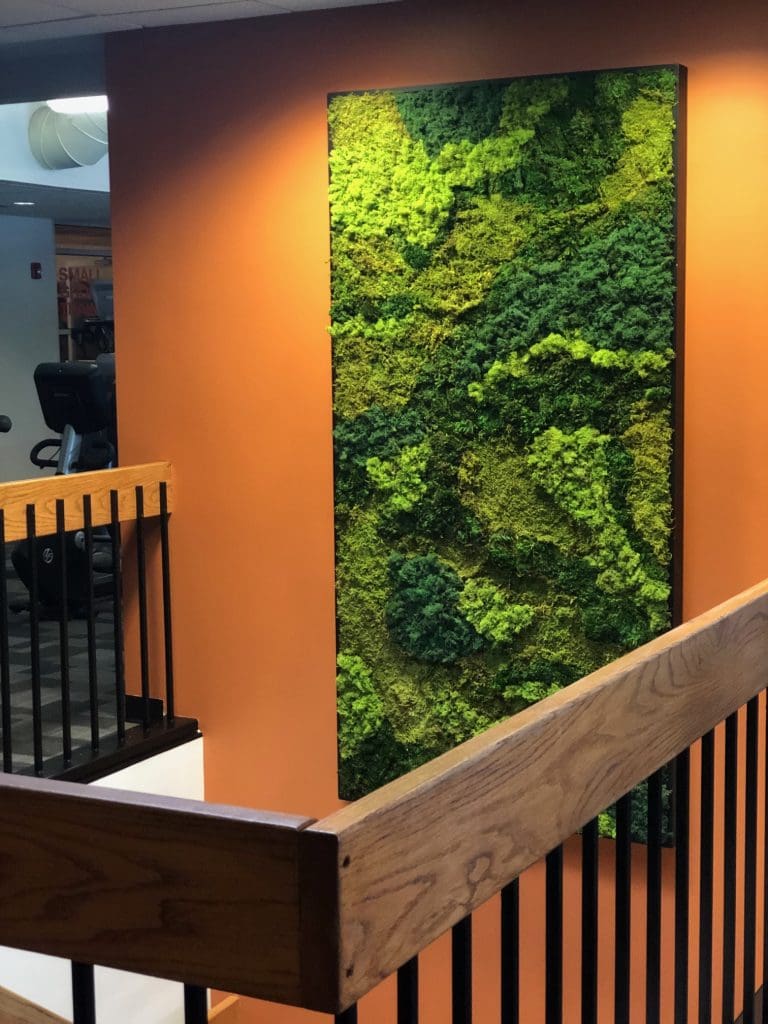Plants Nurture Office Creativity
I’ve always enjoyed having a few plants surround my desk. They create the feeling of a lush island in a sea of beige file cabinets, brown carpet and glowing computer screens. […]
Read the Original Blog Post at The Edge:
Exploring the Biophilic Design Trend, By Jill Odom
Biophilia is the intrinsic human desire to interact with nature. Biophilic designs increase occupant connectivity to the natural environment through the use of direct nature, indirect nature, and space and place conditions.
This concept has been around since ancient times, but the term was more recently coined in the 1980s. The popularity of biophilic designs has been growing and recently hastened further by the pandemic.

“The pandemic has brought a renewed focus on health and well-being, and many people are seeking ways to improve the indoor environment in their homes and workplaces,” says Paige Tisdale, a business developer with Dennis’ 7 Dees Urban Plantscapes. “Biophilic designs, which are known to have numerous health benefits, have become increasingly popular as a result. In particular, the pandemic has highlighted the importance of natural light and fresh air, which are key elements of biophilic design.”
Chris Raimondi, president and CEO of Raimondi Horticultural Group, Inc., based in Ho-Ho-Kus, New Jersey, says in the wake of the pandemic, employers are striving to create more biophilic workplaces to keep their employees comfortable and happy.
“Biophilic design is no longer an approach to the future,” Raimondi says. “It’s here. It’s essential to become experienced in biophilic design today. Modern businesses and city spaces continue to have stricter and stricter regulations when it comes to environmental sustainability and responsibility. To gain new clients through groundbreaking spaces, biophilic design is going to be part of it.”
So, what’s driving the demand behind biophilic designs? Besides it being an innate human desire to be around living things, biophilic designs have numerous benefits to people’s health and well-being. This includes increased creativity and productivity and decreased stress and anxiety.

Raimondi notes that while the statistics can vary from person to person and based on the number of plants in biophilic space, these benefits are significant.
“Educating clients about the benefits of biophilic design and how it can improve their well-being and sustainability can help build support for these types of projects is also a huge leveraging point, not only for closing that sale but also establishing your role as the expert,” Tisdale says. “By incorporating these elements into their work, landscape companies can create beautiful, sustainable, and biophilic designs that promote well-being and connect people with nature.”

Biophilic designs incorporate natural elements and processes into the built environment, including buildings, interiors, and landscapes. This can include features such as plants, water features, natural light, and natural materials.
Raimondi stresses that it’s not just about placing a potted plant in an office.
“Just pumping a building full of plants isn’t the answer,” Raimondi says. “They’ve got to have the correct plants. I’m not just touting throwing plants everywhere. They’ve got to be properly maintained because the wrong plants or plants that aren’t maintained properly will work against the concept.”
Biophilic designs also have a much wider range of strategies that can connect people with nature. Tisdale outlines some of those key elements below:
Even in urban settings, biophilic designs can be achieved with natural materials, living walls or views of nature.
Tisdale notes that biophilic designs also promote sustainability through green infrastructure such as green roofs and permeable pavement. These can promote a sense of connection to nature and provide ecological benefits.
“Overall, creating a connection between people and nature in the built environment and communities can be achieved through a combination of design, infrastructure, community engagement, education, and awareness,” she says.
Naturally, the antithesis of a biophilic design is a space with no windows or natural light, buildings surrounded by concrete and pavement or an interior with synthetic materials and no natural textures or patterns.
As biophilic designs become more commonplace, so will customer requests for them. Tisdale says many of her clients are familiar with the term, especially designers and architects.
“For example, if a client is seeking to create a healthy and sustainable workplace, they may request a biophilic design that incorporates natural light, living walls, and other elements that promote well-being and productivity,” Tisdale says.

Raimondi says more of his commercial clients are asking about biophilic designs and tech companies in particular understand the value of biophilia. Older organizations tend to have a little more pushback.
“They’re against it because it’s changed the way they normally operate,” he says. “Biophilic designs are contrary to standard business practice.”
He expects this trend to spread to residential spaces as well. Tisdale says the decision to incorporate biophilic designs will depend on the client’s goals and preferences, as well as the expertise and recommendations of the designer.
“Before beginning a project, it is important to conduct a needs assessment to determine the client’s goals and needs,” she says. “This can help identify opportunities to incorporate biophilic elements into the design. Biophilic design often requires collaboration with other professionals, such as architects, engineers, and interior designers. Collaborating with these professionals can help ensure that biophilic elements are seamlessly integrated into the design.”
Talking about the budget early on can also help ensure you are able to incorporate biophilic features without breaking the bank.
“We’ll make recommendations from green plants to green walls,” Raimondi says. “And if the budget becomes a hindrance maybe we have to switch to a green moss wall instead of a live plant wall. So that’s how we get around the budget issue. Plants and containers are the least expensive. Obviously, the more you have, the more the costs are. Green walls are not an inexpensive solution.”

Tisdale agrees that moss walls are significantly cheaper as they are preserved instead of living, making it easier for clients to plan and adjust the size based on their budget.
“I have seen greenery often get cut from the budget as construction costs have been so high the last few years,” Tisdale says. “I often encourage space planners and designers to pad the plant budget ahead of time so that when the budget cuts come, we’re still getting a little greenery in the space! I also like to get involved as early on in the process in order to give advice to the developer and owners so their end vision can still be achieved. I’m willing to work with a lot of budget packages, but we also have a standard of excellence and quality. Sometimes a budget is too low, and we have to pass on the opportunity. Stand by your quality and expertise!”
Read the Original Blog Post at The Edge:
Exploring the Biophilic Design Trend, By Jill Odom
Want to know how we can help you?

I’ve always enjoyed having a few plants surround my desk. They create the feeling of a lush island in a sea of beige file cabinets, brown carpet and glowing computer screens. […]

This National Flower Day, don’t get the bouquet everyone expects. Did you know there are plenty of unique types of flowers that can take your bouquet to the next level? At The Little Flower Shoppe, we feature a wide variety of flowers you may have never heard of, but will elevate your bouquet this National […]
Everyone looks to identify and follow the latest trends. Whether it is business, fashion or cooking, trends influence consumer behavior, sway opinions and drive engagement. What’s trending in offices and public spaces in hotels, healthcare facilities and retail outlets across the country? Biophilic design. Biophilic design is the inherent human inclination to affiliate with nature. […]